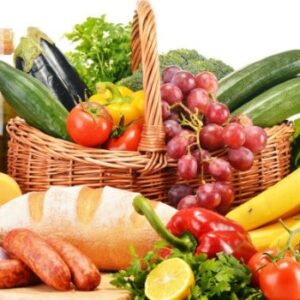 The new requirements for the indication of the country of origin or the place of provenance of food and of the primary ingredient on the labelling have been applicable since 1 April 2020. RNI Conseil has reviewed these new requirements.
The new requirements for the indication of the country of origin or the place of provenance of food and of the primary ingredient on the labelling have been applicable since 1 April 2020. RNI Conseil has reviewed these new requirements.
According to Regulation (EU) No 1169/2011 of the European Parliament and of the Council on the provision of food information to consumers, where the country of origin or place of provenance of a food is given and it is not the same as that of its primary ingredient, the country of origin or place of provenance of the primary ingredient in question needs to also be declared or, at least, indicated as being different to that of the food (access the text here).
The rules for applying this paragraph are specified by Commission Implementing Regulation (EU) 2018/775 of May 28th, 2018 and come into force on April 1st, 2020 (access the text here).
In January 2020, The European Commission (EC) subsequently published a guidance document in the form of a Q&A clarifying those rules (access the text here).
Here is a reminder of the rules applicable on April 1st, 2020:
- The country of origin or place of provenance of the primary ingredient is indicated:
- with reference to a geographical area as “EU”, “non-EU” or “EU and non-EU” or, a region within several Member States or third countries, a FAO fishing area, member states or third countries, a region included in a member state or third country, a country of origin or a place of provenance meeting specific provisions;
- with a statement such as: “(name of the primary ingredient) do/does not originate from (the country of origin or the place of provenance of the food)’
- in the same field of vision as the indication of the country of origin or place of provenance of the food, if the indication of origin of the food is repeated on the packaging, the information on the origin of the primary ingredient (s) must also be repeated;
- in a font size which has an x-height of at least 75 % of the x-height of the indication of the country of origin or place of provenance of the food
- Identification of the primary ingredient of a food:
- the ingredient represents more than 50% of food, or
- the ingredient is usually associated with the name of the food by consumers
- Some examples of indications associated with an indication of origin:
- flags, maps and other national symbols such as a national monument, landscape or recognizable person
- Statements such as “made in” and “produced in”
- It is possible to identify several primary ingredients, in this case, the country of origin or the place of provenance of all these primary ingredients must be indicated.
- When the EU organic logo is used, these rules do not apply.
Above all, the objective of these rules is to provide information on the origin in a manner which does not deceive the consumer. Thus, a case-by-case assessment must be carried out to identify the perception of consumers based on the information given on the labelling. Sector-specific guidelines have also been published. This is the case for the food supplement sector in France, with the publication of Synadiet’s sectoral position of the concept of primary ingredient presented and accepted by the DGCCRF in January 2020.
In France, the DGCCRF also announced at the end of February 2020, the establishment of a working group within the framework of the National Consumer Council to exchange information on consumers on the origin of the ingredients of processed foodstuffs.
For more information on the implementation of these measures do not hesitate to contact us.
#primaryingredient #food



